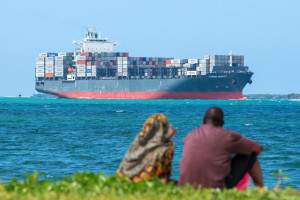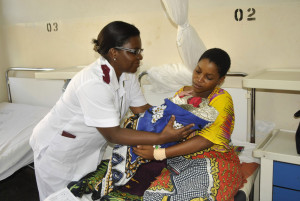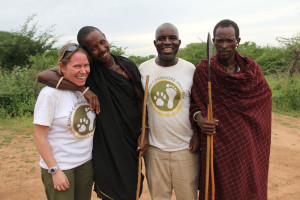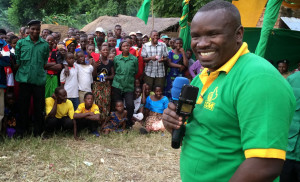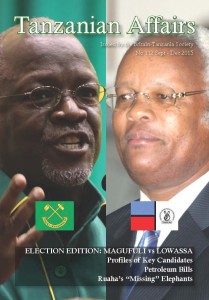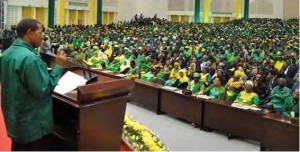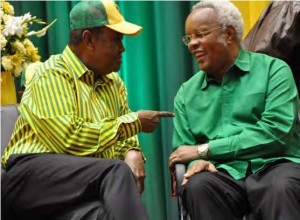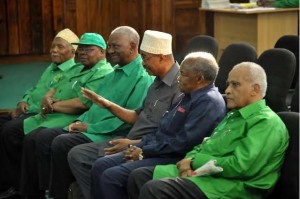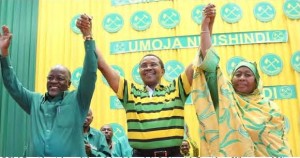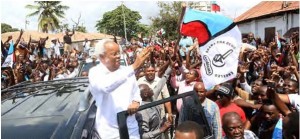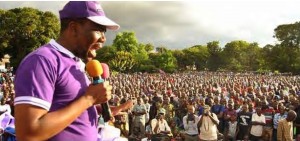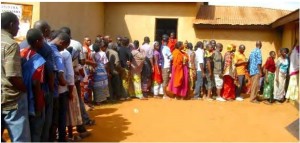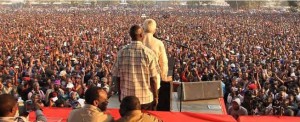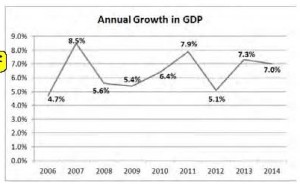by Ben Taylor
Trouble at port
Among President Magufuli’s early new-broom-sweeping-clean actions, taken by him and his new Prime Minister, Kassim Majaliwa, some of the most dramatic were those focussed on the Tanzania Ports Authority (TPA) and related institutions.
The Permanent Secretary of the Ministry of Transport Dr Shaban Mwinjaka, the Tanzania Revenue Authority (TRA) Commissioner General Rished Bade, the TPA Director General Awadh Massawe and Board Chairman Prof Joseph Msambichaka, and several other senior TPA and TRA figures including Inland Container Depot (ICD) supervisors were all fired or suspended. The TPA board was disbanded, and eight suspects were charged in court on December 4th with abetting tax evasion.
The sackings and arrests followed an ongoing crackdown on tax evasion at the country’s largest port, which was said to be taking place unchecked and on an industrial scale.
Two impromptu visits by the Prime Minister to the port led to the discovery that nearly 3,000 cargo containers had been cleared recently from the port without payment of taxes estimated at TSh 80 billion. Four ICDs were reportedly involved in the scam, namely JEFAG, DICD, PMM and AZAM.
In a related move, TRA suspended transfer of containers to Said Salim Bakhresa and Company Limited (AZAM) ICD over allegations that clearance of containers from the company’s depot did not follow procedures.
Said Salim Bakhresa and Company refuted claims that it owned the containers. The company’s director of Corporate Affairs, Mr Hussein Ally, said 85% of the containers belonged to 12 different companies with the rest belonging to individuals. “There are claims that the containers belong to Bakhresa, but I would like to make it clear that none of them belonged to our company. We run a depot for storage of containers for business purposes,” he said.
According to Mr Ally, AZAM depot officials have been cooperating with TRA and have provided them with the names of the containers’ owners. He said that following a directive from President Magufuli that the owners should pay all taxes due within seven days, AZAM ICD had deposited TSh 4 billion and was in the process of depositing another unspecified amount to cover the costs of the revenues lost. He stressed that the Bakhresa Company has had no records of evading tax since the company was formed.
Prime Minister Majaliwa warned that his administration won’t not tolerate any schemes to steal from public coffers. “The port is an essential utility that, if well managed, can bring in huge amounts of revenues which will boost the national income. The government is not going to tolerate the few individuals or a gang out to use their offices to sabotage the systems and steal the revenues in any way,” he said.
At the time of writing, further unannounced visits by the Prime Minister to Tanzania Railways Limited looked set to lead to further sackings and discovery of more fraud. “The investigation is ongoing and we’ll take actions when we’re done with it, and we will inform you of it. We have a vision of stronger TRL and the government is going to take all required steps to realize that” said Majaliwa.
World Bank loan for expansion of Dar es Salaam port
The World Bank (WB) has issued US$ 600m in loan to the Tanzania Ports Authority to upgrade the Dar es Salaam Port. The money will be used to widen berths 1 to 7 for the port to be able to accommodate bigger vessels as well as turning it into “the cheapest and most competitive entity in the East and Central African region,” according to Tanzania Ports Authority (TPA).
The funds will also be used to widen the main port entrance from 140 metres to 200 metres and to increase the depth of the port from 10.5 metres to 13 metres to allow for larger vessels.
“Our main focus was just to receive big ships similar to other countries and prevent them docking in other countries,” said the acting TPA Port Manager, Hebel Mhanga.
The upgrading project has the aim of improving port capacity from 14.6 million tonnes in 2013/2014 to 28 million tonnes in the next five years.
Previous expansion works at Dar port enabled the docking in late August of the largest ship ever to be handled at the port – the 255m long Clemens Schulte, operated by Maersk Line. It was described as “testimony of the growing confidence of the international shipping lines in the Dar port,” said a port spokesman, adding that the port is now operating 24 hours a day, 7 days a week. (The Guardian)
Foundation stone laid for Bagamoyo Port
The laying of a foundation stone at Bagomoyo port represents the start of construction works at the so-called “mega project.” Construction is expected to take 5-7 years.
In addition to the port itself, the project involves constructing an 80km rail link connecting Bagamoyo to both the central line and TAZARA railways, an industrial park with cement production, textile and hide processing factories and piped gas supplies. The site is around 2,400 hectares.
Outgoing Minister of Foreign Affairs, Bernard Membe, described the port as President Kikwete’s “biggest goodbye present to the nation”. He added that once the port is complete, it is expected that economic growth will skyrocket and that because it is a natural harbour, there is every reason for it to be an international port.
Dr Hu Jiahua, the Chief Executive Officer of China Merchants Group, which won the bid to construct the port, said that they were excited to be part of the project and it was their intention of turning Bagamoyo into a dream port.
The Manager of Tanzania Ports Authority noted that the limited room for expansion of the city centre port in Dar es Salaam, coupled with the rapid growth in cargo flowing through Dar, was more than sufficient justification for such a large new investment in Bagamoyo. (Daily News)
Songwe Airport ready for international flights
Tanzania Airports Authority (TAA) has said that they expect Songwe Airport in Mbeya to meet International Civil Aviation Authority standards for international flights very shortly. The expansion and upgrading of the airport to international standards started in June 2015 and is scheduled for completion early in 2016.
Improvements to the airport include new landing lights for the runway and a new airport building. The upgraded airport will have the capacity to handle 500,000 passengers annually, both national and international. (The Citizen)
Work to start on Dar flyovers
A contract for the construction of the long-awaited flyover at TAZARA junction (Nyerere Road and Mandela Expressway) in Dar es Salaam has been signed, meaning that work should begin imminently. The Japan-based Sumitomo Mitsui Construction Company won the contract for the work, which will be financed by the Japanese Aid Agency, JICA.
The JICA representative Tishio Nagase said the first flyover of its kind in Tanzania would contribute significantly to reducing traffic jams along the roads to airport, Temeke and the city centre along Nyerere Road.
Japan is also financing upgrading of the Mwenge-Tegeta road, Kilwa Road and undertaking a feasibility study to upgrade Morogoro Road as far as Chalinze, including flyovers.
The TAZARA junction flyover project was among President Kikwete’s most high-profile election promises in 2010. The outgoing Minister of Works, Dr John Magufuli, now President Magufuli, said it was encouraging that the promise is now entering the implementation stage.
It is currently estimated that traffic congestion costs Dar es Salaam around TSh 4bn per day in lost economic activity. (The Citizen)
New deals for FastJet
FastJet has signed new deals with Kenya Civil Aviation Authority and the Dubai-based airline, Emirates, that look to cement the company’s status as the fastest growing airline in East Africa.
The deal with Emirates allows passengers to book connecting flights on FastJet through Emirates’ booking system, including online booking. The arrangement with KCAA will finally allow FastJet to operate flights in and of our Jomo Kenyatta International Aiport in Nairobi. FastJet announced that daily flights will begin between Dar es Salaam and Nairobi on January 11th, with prices starting at US$ 80 plus taxes for a one-way ticket. Daily flights will begin on the same date between Nairobi and Kilimanjaro International Airport, with prices starting from $50.
In a statement issued to the London Stock Exchange, FastJet stated that “Fastjet Tanzania has been working towards the launch of these routes for some time and we are extremely pleased that clearance has now been granted to commence operations. To date, passenger traffic between the major cities of Dar es Salaam and Nairobi, which have a combined population of over 8 million people, has been limited by high air fares which we believe, have excluded large parts of the local population from air travel.”
FastJet has also cleared another significant hurdle in Kenya, with the issuance of an Air Service Licence for a FastJet franchise based in the country. (The Citizen, Wolfgang H Thome)
DART fares announced, executive fired
The government has suspended the head of the Dar Rapid Transit (DART) initiative, Asteria Mlambo, over procurement irregularities.
In April, DART signed a two-year agreement with a company known as Usafiri Dar es Salaam Rapid Transit (Uda RT) to become an Interim Service Provider for the DART system, including purchasing and operating 76 modern buses. Ms Mlambo is accused of having made major decisions without properly consulting the DART advisory board, and of failing to take action on discovering that Uda RT violated terms of their contract. She was suspended by the incoming Minister of State in the Prime Minister’s Office for Regional Administration and Local Government, George Simbachawene, to allow for investigations to be carried out.
Previously, launch of the bus service had been delayed for several reasons, including disputes over the procurement of an operator, and finalisation of the infrastructure. The project consists of 24km of specially constructed roads (in the first phase), bus stations and park-and-ride facilities. It cost US $290m, with finance provided by the World Bank.
In September, the Surface and Marine Transport Regulatory Authority (SUMATRA) proposed fares for passengers using the new buses, for public consultation. The proposed fares were set at TSh 700 for passengers travelling from Mbezi-Kimara to Kivukoni along Morogoro Road, TSh 500 for those using feeder roads and TSh 800 for both feeder and trunk roads. Commuters travelling from Mbezi-Kimara to Makumbusho, will be required to pay TSh 900. Despite a public outcry at the new fares, which are around double the current daladala fares, DART said they were set on charging the proposed amounts.
An electronic ticketing system will be used on the buses, which will not have conductors.
“A new Selander Bridge”
The government has signed a contract worth US $91m with the Government of Korea for a loan to finance the construction of a new bridge linking Oyster Bay with the City Centre.
Signing the contract, the outgoing Finance Minister, Saada Mkuya Salam, said the bridge would significantly reduce congestion around the current bottleneck point of Selandar Bridge. She said that Korea has provided 83% of the cost, with the Tanzanian government providing the remaining 17%.
The Head of Tanroads, Patrick Mfugale, said that they expected to appoint a contractor within 6 months, and the bridge would be complete within two years. He explained that the bridge would link Coco Beach with a point in the city centre near the Aga Khan Hospital, with a span of 1.3km.

